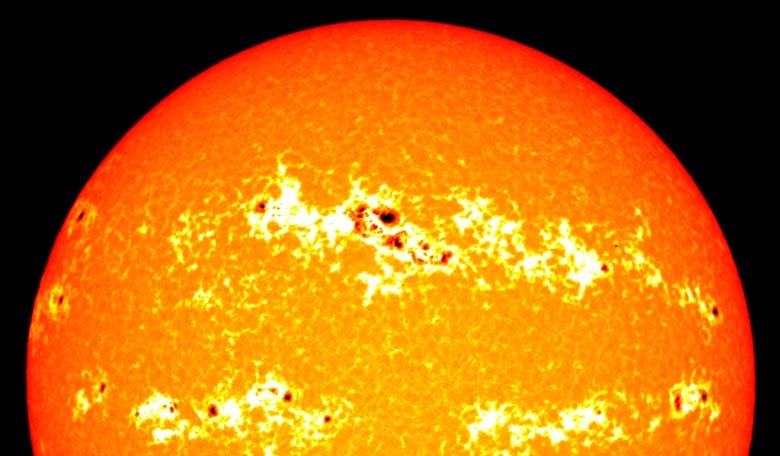A study of the Sun’s activity over a thousand years, conducted by a team of international researchers, has revealed that during times of its grand minimum phase - a period of unusually low solar activity – the Sun’s magnetic field is actually at a maximum and that it may hide at the bottom of the convection zone.
With the aid of Finland's most powerful super computer over a period of six months, the team, based at the Aalto University Department of Computer Science, the ReSoLVE Centre of Excellence and the Max Planck Institute for Solar System Research, used a global computer model of the Sun to seek an explanation for the mechanisms involved in the long-term variation in solar activity.
During the Sun's quiescent periods, the solar magnetic field is thought to wither and become weak, so weak that it is not capable of generating sunspots or other activity. However, results from the study suggest that in fact, during these periods the magnetic field is at its maximum, demonstrating that the interpretation of grand minima-type events is nontrivial.
Through centuries of recording sunspot numbers, researchers know that sunspot cycles occur roughly every 11 years. However longer cycles were activity is at a minimum are also thought to occur and these are suggested to occur in secular periods of 80–90 years as well as a long-duration period of about 210 years.
Perhaps one of the most well known periods in which solar observers noted an apparent lack of sunspot activity is the Maunder Minimum. This occurred between 1645 to 1715 and is an epoch when harsh winters across Europe and the UK were often severe and is known by climatologists as the “Little Ice Age.’
“Thus far, we have only been able to examine what is visible on the solar surface, but simulations enable us to see below the surface. During the Maunder Minimum, the magnetic field sinks to the bottom of the convection zone and is very strong there,' says Maarit Käpylä, head of the DYNAMO team, who conducts astroinformatics or computational astrophysics and data-analysis at the Department of Computer Science.
The convection zone extends from a depth of 200,000 km up to the visible surface of the Sun (the photosphere) and due to the turbulent state of the fluid (called plasma) is often remarked as looking like a pot of boiling water. "The Sun as such is impossible to replicate on present-day computers - or those of the near future - due to its strong turbulence. And indeed we are not claiming that this modelling would really be the Sun. Instead, it is a 3D construction of various solar phenomena by means of which the star that runs our space climate can be better understood," explains Käpylä.
The models constructed by the team covered about 80 solar cycles seen from the surface, i.e. more than 1,000 years in solar time and were extremely complex. However, the team acknowledge that even though this simulation has been run for a considerable length of time, to fully capture and understand this trend, and to find out whether it is a transient or a real cycle, the simulation would still need to be continued further.
What implications this has for understanding future lulls in solar activity is still unclear, but these simulations suggest that cycle variation is far from simple.











